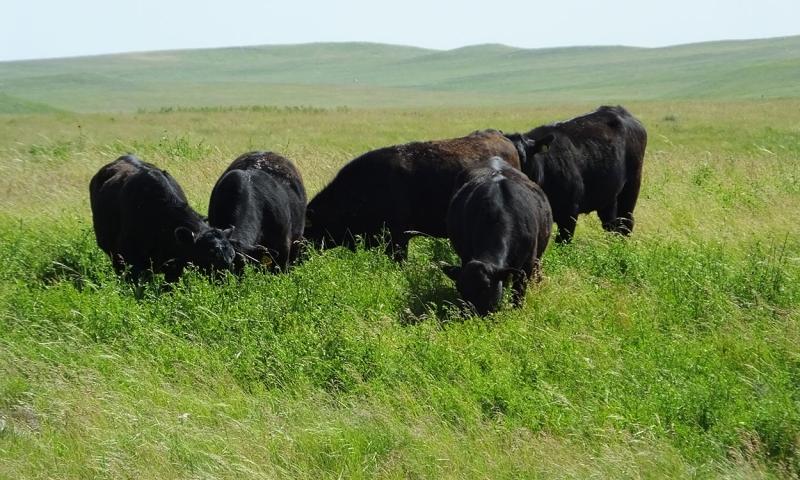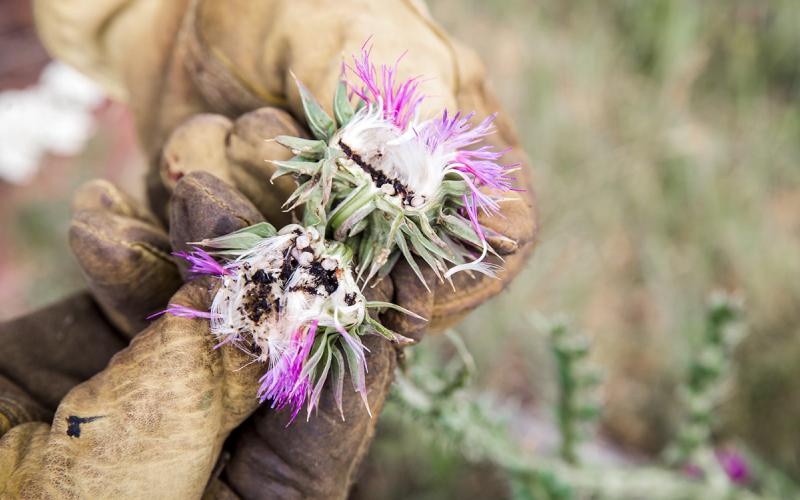
When planning a grazing strategy, it is important to carefully assess goals and objectives and then match those goals and objectives with the appropriate livestock. It is critical that the manager understand that not all livestock are created equal. Not only can there be marked difference in species’ grazing techniques regarding how they clip the vegetation and what types of forage, terrain and cover they prefer, there can also be surprising differences between breeds and among individuals depending on experience, age and size.
At the base level, it is important to understand general consumption parameters. Generally, livestock forage consumption is based on a standard of a 1,000-pound cow, known technically as an animal unit. Depending on certain factors, such as age, nursing or sex, a 1,000-pound animal will consume about 2% to 3% (20– 30 pounds) of its body weight in dry matter forage every day. Based on this standard, larger or smaller cattle and individuals of other species can be given a comparable animal unit ranking. For instance, a 1,500-pound cow would equal 1.5 animal units, whereas a typical ewe would be considered about 0.18 animal units. Stated another way, it takes six ewes to equal the forage consumption of a single 1,000-pound cow.
Grassland managers should monitor the condition of their land during and after livestock grazing to ensure that estimates are accurate.
Livestock Differences Explained
Not all animals graze the same. Bison, at one extreme, are uniquely adapted to North America’s grasslands and can successfully graze in a variety of conditions and the harshest weather with little issue. Cattle have different forage needs, but can still utilize high-lignin, mature feed with proper supplementation. Sheep tend to graze even more selectively, because they can move the upper and lower lip to bite, while cattle tend to sweep with their tongue and pull. Often, sheep will strip leaves from a plant, leaving the stalk, unless forced to consume it. At the far extreme, goats are able to browse on a wide variety of brush and weedy species, but they require the highest feed quality to maintain condition. They can prove to be a valuable asset when trying to reduce woody vegetation or invasive broadleaf species in grasslands.
| Species |
Weight |
|
Intake |
|
Per-Day |
Per-Month |
|---|---|---|---|---|---|---|
| Sheep |
|
|
|
|
|
|
| Sheep |
|
|
|
|
|
|
| Yearling |
|
|
|
|
|
|
| Yearling |
|
|
|
|
|
|
| Cow |
|
|
|
|
|
|
| Cow |
|
|
|
|
|
|
| Cow |
|
|
|
|
|
|
| Cow |
|
|
|
|
|
|
The Healthy Grasslands article series is provided by the South Dakota Grassland Coalition in partnership with SDSU Extension. Contributing editors: Alexander J. Smart, Peter J. Bauman and Joshua Lefers. © South Dakota Grassland Coalition 2017. For more information, view the full publication or visit the South Dakota Grassland Coalition website.


